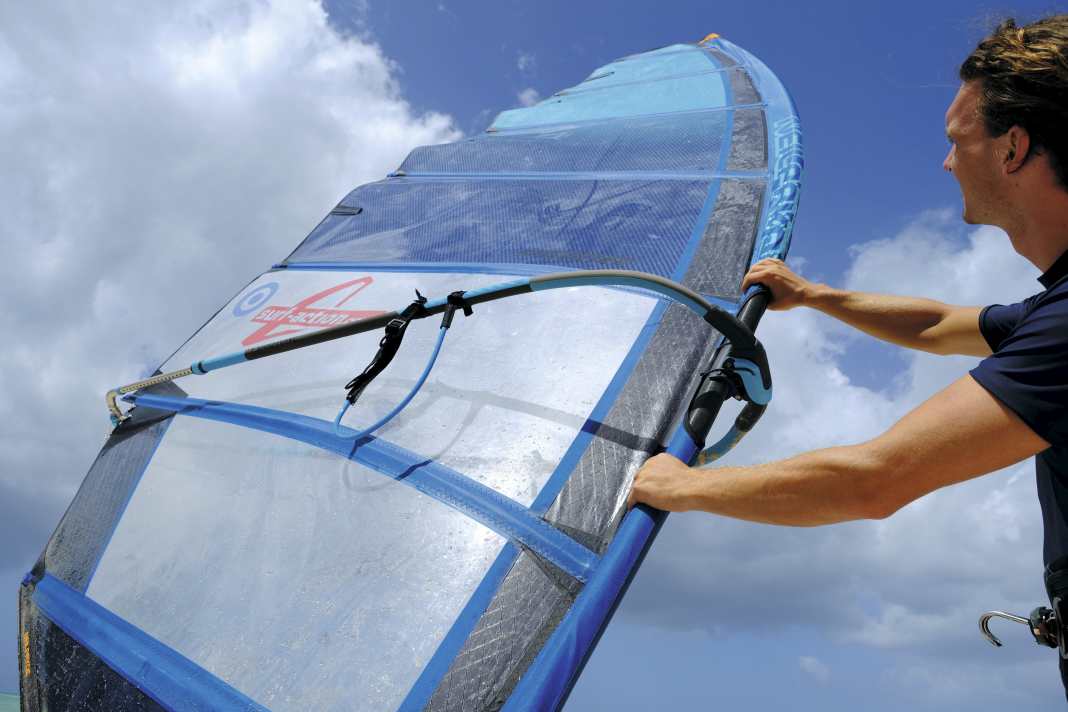





If surf hadn't already been around for over 45 years, the test lab could be mistaken for the company gym of a hip start-up. The biceps and dyneema lamps are being pulled and bent at peak office hours. After the extensive practical mast test of the current freeride sails In February, the test team agreed that we should get to the bottom of the usually noticeable differences between the top mast of each brand and the number two in the range. And not with the old, complex but still very error-prone IMCS measurement method, but by alternative means. Of course, the practical results still have top priority, but a fundamental underpinning can do no harm.
The old IMCS measurement for masts
Flashback to the beginnings of IMCS: We are travelling back to the decade of wooden booms and sails without loose leech, which were mainly trimmed via the boom. Masts were then (and still are today) stored horizontally at both ends for measurement, loaded in the centre with a (ridiculously low) 30 kilos and then the deflection measured. In the centre for the hardness and again at 1/4 and 3/4 of the length for the classification of the bending shape, from hardtop to flextop. As a result, all 460 masts in the shop are labelled IMCS 25: IMCS 25. Well, carbon is patient.
The compression measurement, on the other hand, reveals far more about each mast than the "standardised" IMCS measurement. The bending characteristics of different masts show greater differences and the bending of the mast in the sail is modelled much more realistically. It is not without reason that at least some sail designers, riders and trainers compare their masts in a similar way when it comes to the most subtle differences, for example in racing sails. All our measurements can only represent random samples, after all we only had one mast each at our disposal. However, if you look at the results across all brands, you can already see an interesting picture with a clear trend.
Other topics relating to masts:
Equal rigour is (marketing) wishful thinking
Apart from one outlier, it is safe to say that - no matter how much and how often you pull and bend the masts - the hardness increases moderately to sometimes significantly with higher carbon content in all measurements in the laboratory. This is also confirmed by the trim forces measured on the GunSails Re-Rapid as a cross-check: on the 100 mm mast, the crane scale shows exactly 10 per cent more pull on the trim handle at 90 kilos than on the 75 mm mast. The brands for which the differences in the cool laboratory were particularly large also predominantly showed the clearly noticeable differences in the hot wind.
- With NeilPryde the TPX 100 stands out as a particularly stiff mast with a relatively less flexing top. Accordingly, the difference to the SPX 70 is also noticeable in the Speedster. And this despite the fact that the SPX is still almost as stiff as a Duotone Platinum and significantly stiffer than the Gunsails Expert.
- We also observed a particularly large difference in the two Duotone-The Silver is significantly softer overall and also at the top than the Platinum and, as by far the softest mast in the test field, cannot support the E_Pace SLS as well as the 100 per cent mast.
- A similarly large difference can also be seen in the two GA-masts and here, too, the differences were noticeable on the water. All three sails mentioned are less stable in the hand and cover a smaller wind range in one trim. For these three sails, the highest quality mast is noticeably the best recommendation - according to the testers from the 77 to 85-kilo class.
- The sail from Naish is the fourth in the group of brands where the upgrade is clearly worthwhile; here the carbon leap from 60 to 100 per cent is already particularly large on paper.
With GunSails, Loftsails, Point-7 and Sailloft the difference felt is still slightly perceptible, but very acceptable, the full carbon mast falls predominantly under the heading "you treat yourself to something".
Naish's mast recommendation for the 4.60 metre mast is about two centimetres too long for the 7.0 sail, which seemed suspicious to the testers. We therefore tested the sail on a 430 GA mast, which seemed far too soft in the sail, whereas an alternative 460 Sailloft RDM fitted almost perfectly: the manufacturer's mast recommendation is obviously fully justified.
How masts from other brands behave
In addition to the brand-internal comparisons, we tried numerous "wild mixes". The NeilPryde sail did not work very well with the GA mast, even if the profile looks good on land. The mast was too soft for this sail cut and in choppy water, compressive cross-folds formed. Conversely, the stiffer NeilPryde mast did not have a negative effect in the GA Matrix. With a little more profile, it remained very stable and light. A slightly too hard mast seems to have less of an effect overall than a too soft sail, at least for heavier surfers.
How does a ten-year-old mast perform?
The test with an original NeilPryde X35 mast, which had already been on the GRP-carbon laminate for about ten years, was really exciting. The sail suddenly requires less luff length and even in medium trim, the loose sail almost slurps up to the boom. Surprisingly, despite the balloon-like leech, it remains easy to control even in strong winds. In wind holes, however, the performance is gone and the ride feels heavier, more indirect and slightly spongy, especially at the top end. The X35 (which was no longer available for the lab) obviously dates back to an era of super-soft bending curves; the problem here is not the overall hardness, but the soft top.

Compression test: Measuring method with great potential
While the load on some masts rises to over 140 kilos in the lab test in order to achieve the desired 35 centimetres of deflection in the centre (NeilPryde TPX), the display on the 75 percent masts from Gunsails and Duotone simply stops at 127 kilos and the masts merely continue to bend - especially with extreme deflection in the top - until the tester loses his nerve at some point and aborts the test. Surprisingly, the serious differences in the laboratory are not felt to the same extent on the water. In the compression test, all the differences compared to the IMC measurement are shown as if through a magnifying glass.
For uniform, comparable values, a new standardised measurement setup should be defined that enables easily reproducible results. Measurement after compression is a suitable method. The key data could pose a challenge, as the test force or deflection to be defined should be suitable for masts with very different stiffnesses. In any case, we will stay tuned!
Practice vs. theory: a comparison of eight mast pairs
Duotone E_Pace SLS 7.2



- Duotone Platinum SDM 460; 999 euros, 1.76 kilos
- Duotone Silver SDM 460; 509 euros, 2.24 kilos
On the Platinum mast, the E_Pace impressed as a very light, handy rig with a good wind range. In the laboratory, the Silver mast appears significantly softer overall and also in the top rigidity, and the sail had to be re-trimmed more often in the practical test. Duotone's clear recommendation before the sail test was the Platinum mast, and we would agree with that.
GA-Sails Matrix 7.2
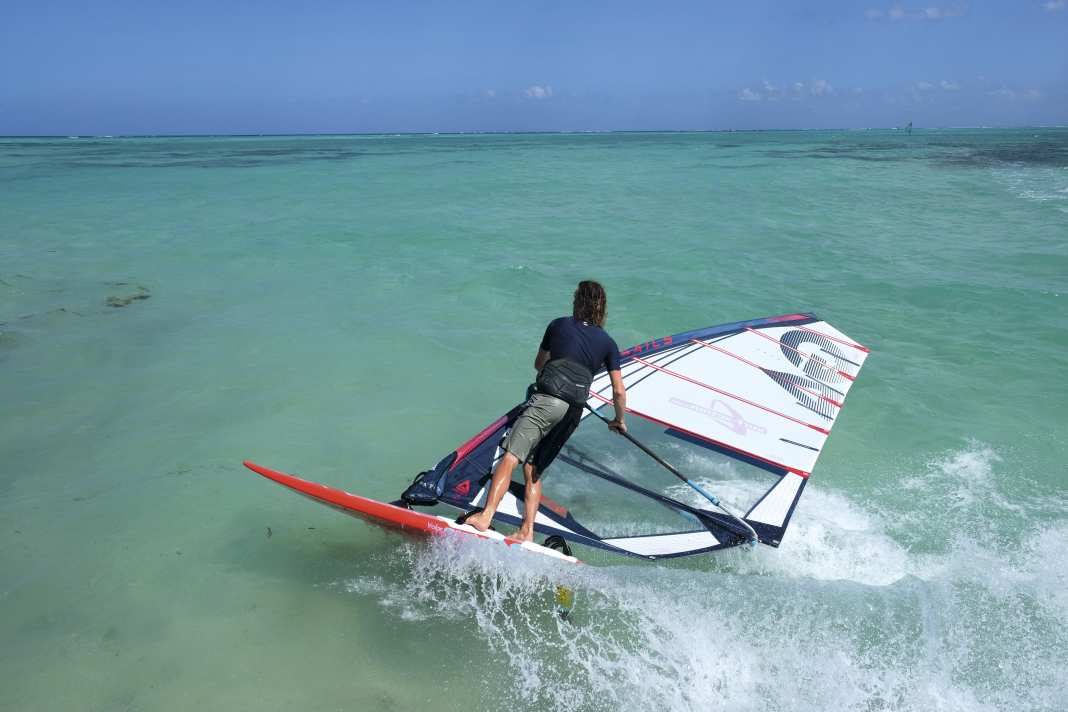


- GA-Sails C 100 SDM 460; 839 euros, 1.92 kilos
- GA-Sails C 80 SDM; 569 Euro, 2.3 Kilo
With the 100 mast you surf noticeably more directly with GA, the sail offers a wider range of use in one trim and reacts less sensitively to trim. In the laboratory, the 75 mast is significantly softer than the 100 GA mast and is one of the softer models in the overall comparison. This is also noticeable on the beach due to the lower trim forces, especially on the luff.
Gunsails Re-Rapid 7.2



- Gunsails Select 100 SDM 460; 404 euros, 2.04 kilos
- Gunsails Expert 75 SDM 460; 267 euros, 1.98 kilos
Although the Expert mast is significantly softer in the lab than the Select, the sail cut, which makes for a very easy to trim and particularly stable sail, seems to compensate for a lot of this. The 75 Expert is the softest mast in the lab, but only has a slightly softer and more dampening effect in the Re-Rapid - which means that the sail loses comparatively little of its inherent stability.
Loftsails Oxygen HD 7.0
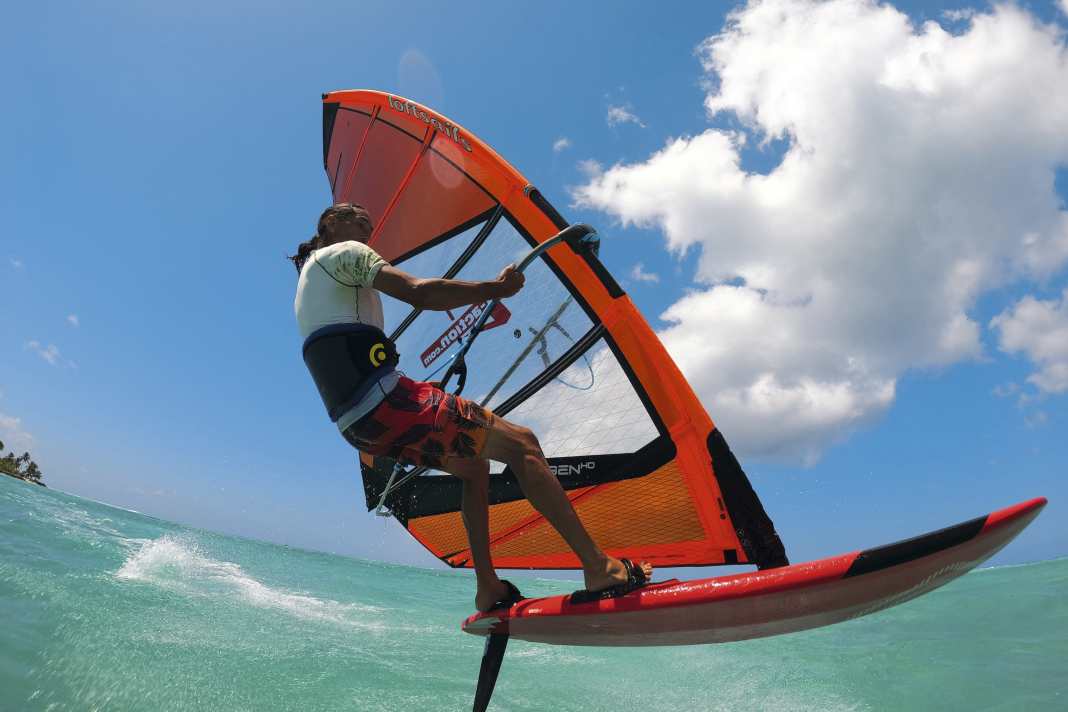


- Loftsails Team 100 SDM 430; 599 euros, 1.72 kilos
- Loftsails Vision 75 SDM 430; 389 euros, 1.86 kilos
The soft, cushioned feel is probably also due to the two fairly soft masts. The 75 is a shade tighter in the lab and can therefore largely compensate for the weight and carbon disadvantage. Nevertheless, the testers found the sail on the Vision 75 to be slightly more unstable, slightly more damped and heavier, but with only a very slight noticeable difference.
Naish No-Cam Freerace 7.0
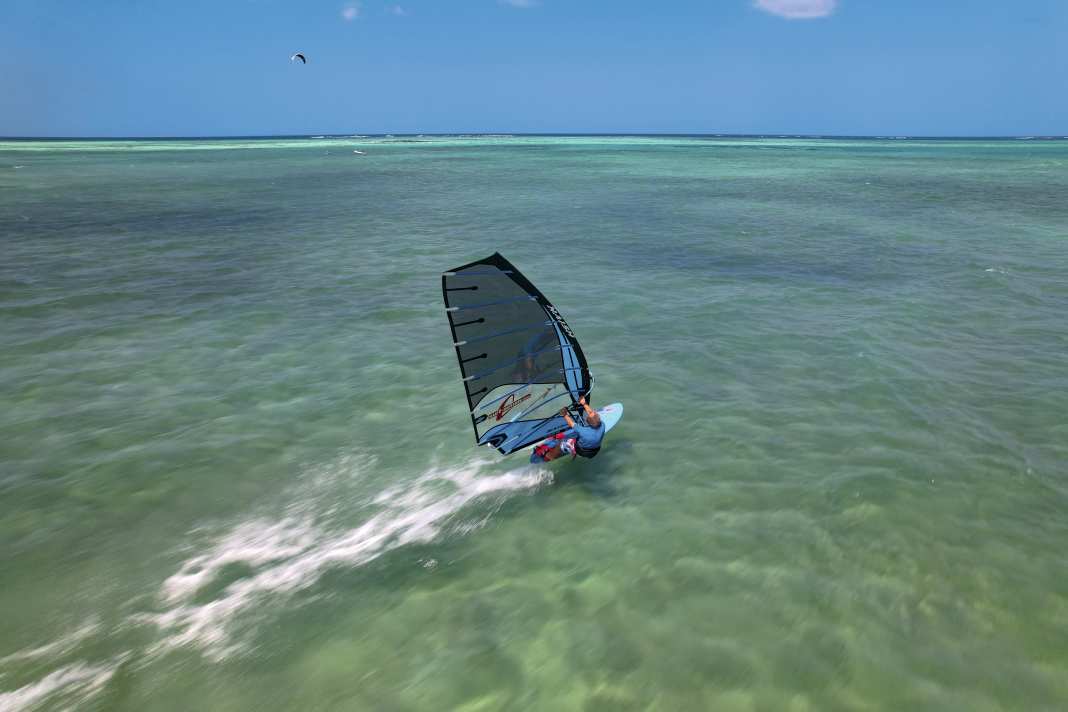


- Naish SDM 460 C100; 759 Euro, 2.0 Kilo
- Naish SDM 430 C60; 469 Euro, 2.6 Kilo
In addition to being only 60 per cent carbon and 0.6 kilos heavier, the 60 cm Naish mast also has the softest top after the lab test. The sail requires one centimetre less luff for the same amount of looseness (otherwise too much looseness) and therefore also appears less taut, heavier and, at least in rough choppy water, slight compression wrinkles are noticeable.
NeilPryde Speedster 7.2
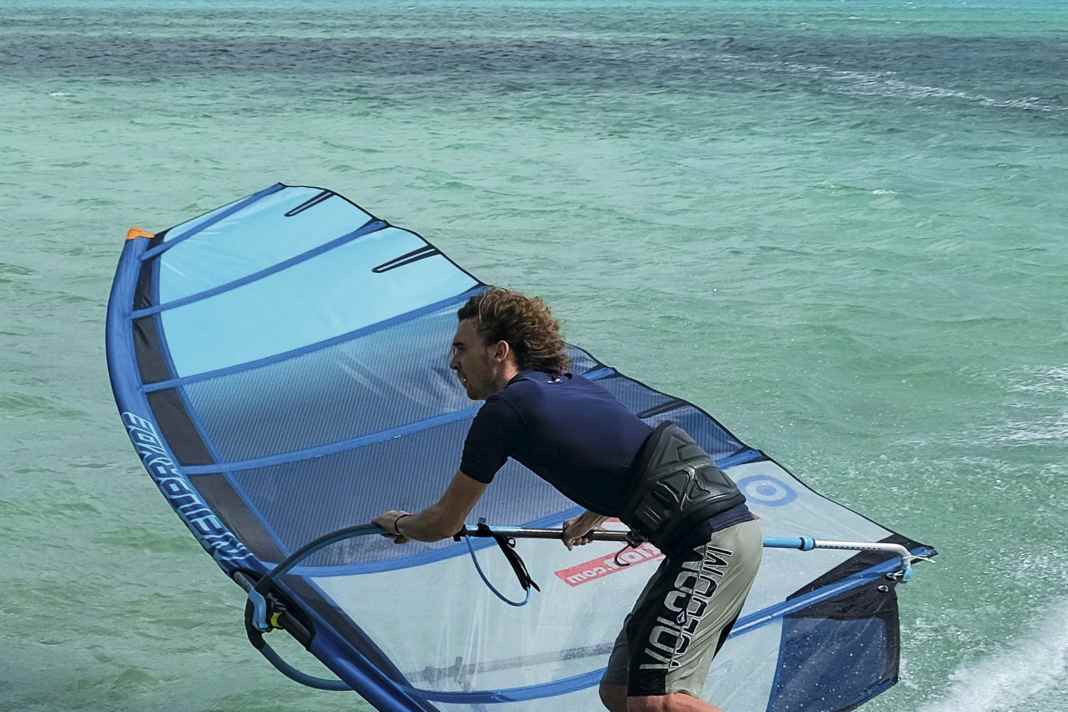


- NeilPryde TPX 100 SDM 460; 1049 euros, 1.84 kilos
- NeilPryde SPX 70 SDM 460; 499 euros, 2.16 kilos
The stiffest (and most expensive) mast in this test is the NeilPryde TPX 100 and so it is hardly surprising that the sail works noticeably more on the measurably more flexible 70 mast. 30 per cent is a big jump and the feel is much crisper on the 100 and super stable in choppy water and gusty winds - where the 70 tends to give way. Alternative tip: SPX 90 or 95.
Point-7 AC-0 6.9
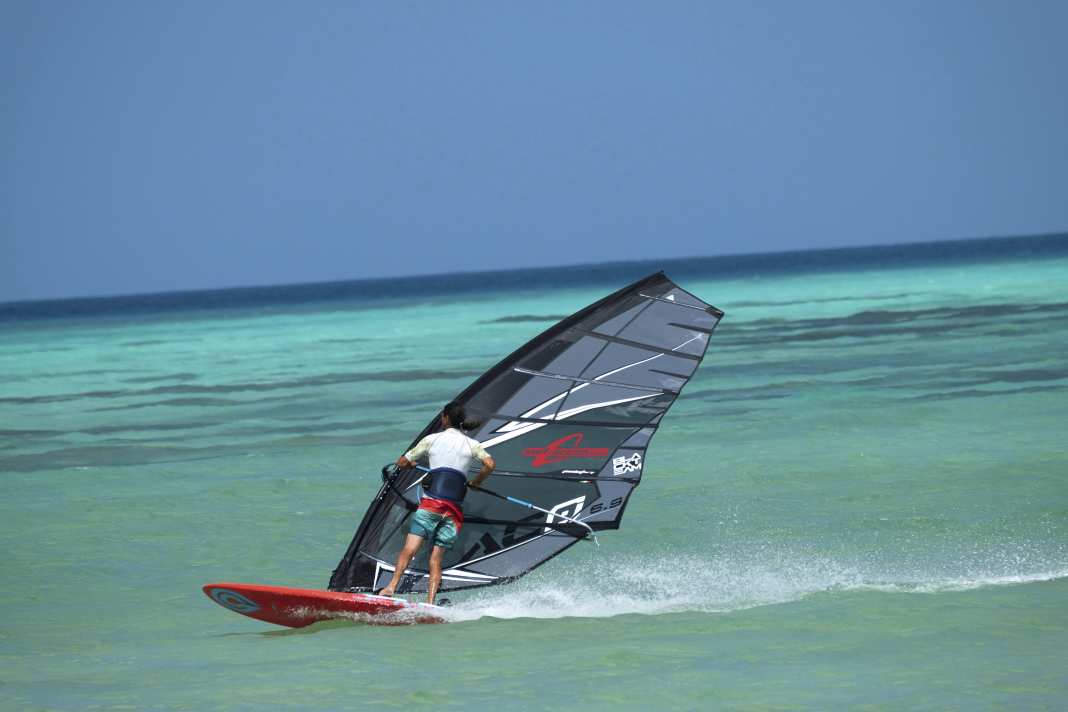


- Point-7 K100 SDM 430; 599 euros, 1.62 kilos
- Point-7 K80 SDM 430; 439 euros, 1.72 kilos
The rigid shape and the massive ride feel do not change when changing masts, only a slightly lighter ride feel in the chop was felt by the testers on the K100 mast. However, this is probably due more to the direct feel of the significantly stiffer 100 mast than to the slight difference in material weight. The 100 is slightly more fun, both are easy to surf.
Sailloft Cross HR 7.2
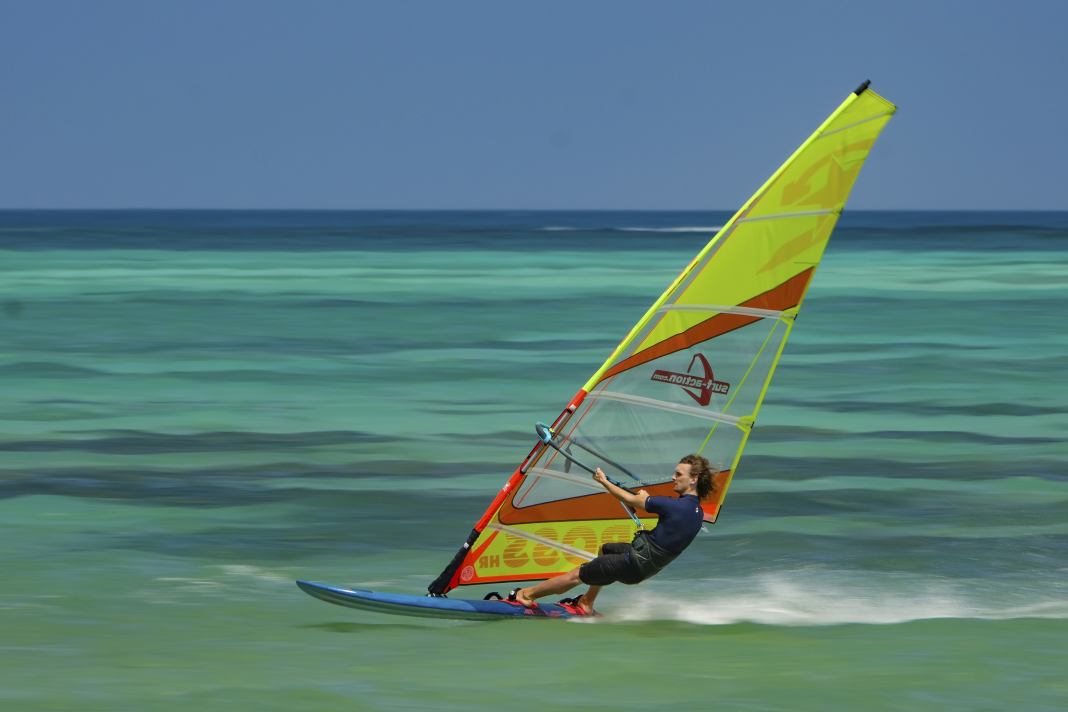


- Sailloft Red C100 RDM 460; 779 euros, 1.9 kilos
- Sailloft Blue C 80 RDM 460; 619 euros, 2.18 kilos
The RDM masts from Sailloft have a bending hardness in the range of SDM masts. The 80 is slightly stiffer in the lab and can probably compensate for the small weight disadvantage. It is slightly softer at the top and produces more slack. The differences seem minor on the water: with a slightly lighter, more stable feel on the 100 per cent mast.

